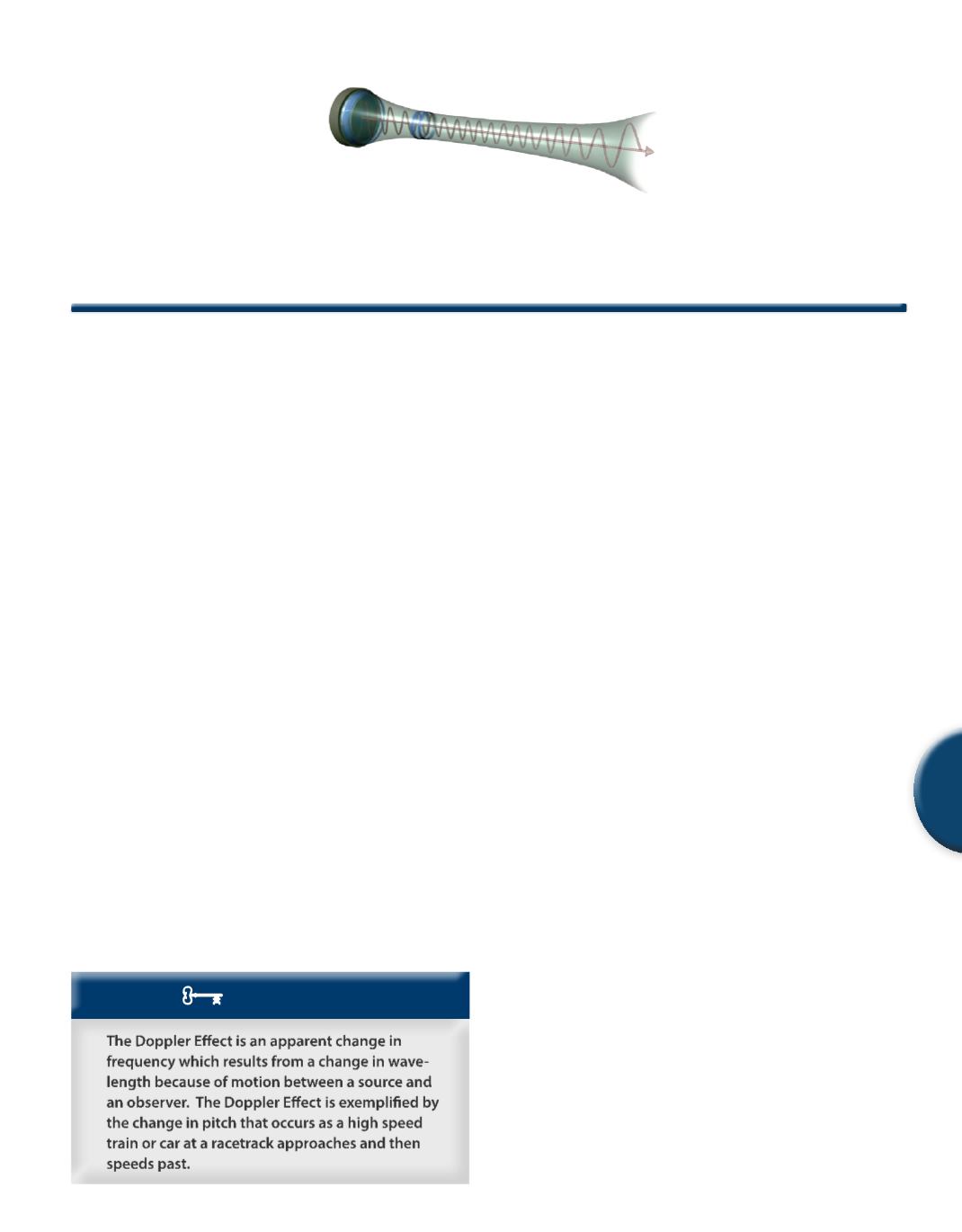
Chapter 7: Doppler
223
7
Introduction
One of the principal requirements of diagnostic ultrasound is to
measure the velocity and determine the characteristics of blood flow.
Doppler is actually a broad category which includes spectral Dop-
pler,waveformDoppler,audio Doppler,and color flow imaging. It is
important to realize that everything you have learned about waves,
sound, transducers, etc., holds true for Doppler, with the addition
of a new effect – a shift in frequency called the Doppler Effect. The
Doppler Effect has been used for many years as the mechanism
by which blood flow is detected, measured, and monitored non-
invasively within the body.
Doppler is one of the most powerful techniques used in ultrasound,
but also the tool most under-utilized andmisinterpreted. ADoppler
spectrum contains a wealth of information for the person who has
learned the theory of Doppler, the practical application, and the
relationship to the hemodynamic situations being assessed. This
chapter focuses on the fundamentals of Doppler. By itself, the fun-
damentals of Doppler are less than half of the whole story. To fully
appreciate the significance of Doppler and Doppler measurements,
you must review the principles of fluid dynamics and hemodynam-
ics. In essence, you should consider this chapter as part of a trilogy
which includes Chapters 12 and 13.
Level 1 will discuss general Doppler theory,fundamental principles,
and basics. Level 2 presumes the theory of Level 1 to develop an
understanding of the Doppler system controls,functionality,limita-
tions, and trade-offs. We will begin Level 1 by discussing the basic
theory behind the Doppler Effect.
KEY CONCEPT
1. The Doppler Effect
1.1 Change in Frequency
The Doppler Effect is an apparent shift in frequency of an interro-
gating wave caused by relative motion between an observer and an
object. This apparent frequency shift is actually the result of changes
which occur to the wavelength because of the relative motion. In
other words, if a wave (with a given wavelength) reflects from an
object which is moving, the wavelength of the reflected wave will
be different than the original wavelength. Specifically, if the object
is moving toward the observer (wave source) then the wavelength
will be shorter than the original wavelength; whereas, if the object
is moving away from the observer, then the reflected wave will
have a longer wavelength. Since a shorter wavelength represents
a higher frequency, motion toward the observer produces a higher
frequency than the original wave. Conversely, motion away from
the observer produces a lower frequency than the frequency of the
transmitted wave.
1.2 The Doppler Thought Experiment
To understand the Doppler Effect we will use the classic example of
a moving train blowing its whistle and two observers.
Scenario 1:
Stationary Train
Let’s begin by considering a stationary train blowing its whistle.
There are two observers,observerA and observer B,on either side of
the train. As the whistle blows, it produces a series of compressions
and rarefactions at uniform time increments. The time increment
between each compression (the period) is determined by the fre-
quency of the whistle. Over time,the waves propagate radially away
from the stationary train. For the figure below,the rings surrounding
the train represent the propagating mechanical sound waves over
time. The solid circles represent the peak wave compressions, and
the light regions in between represent rarefactions. Also recall that
the distance between these compressions is called the wavelength.
Doppler
Chapter 7


